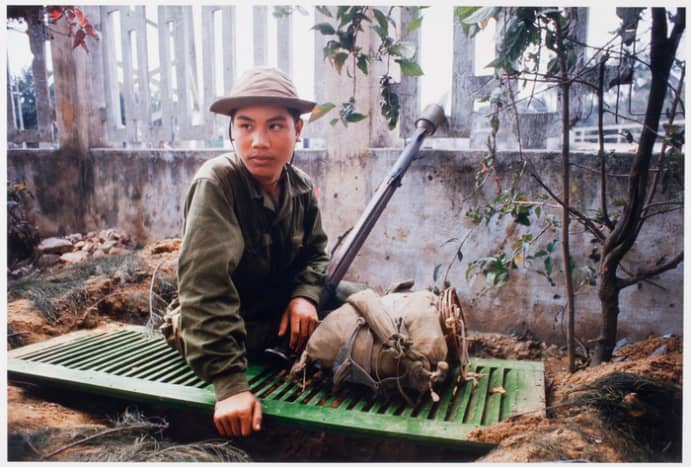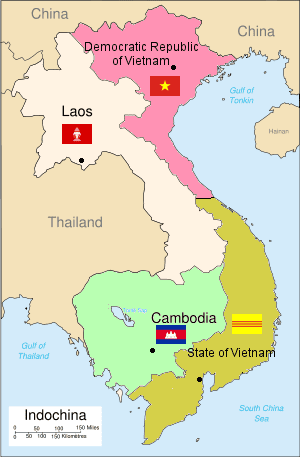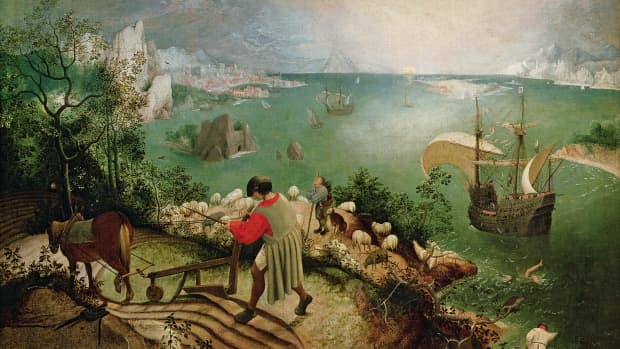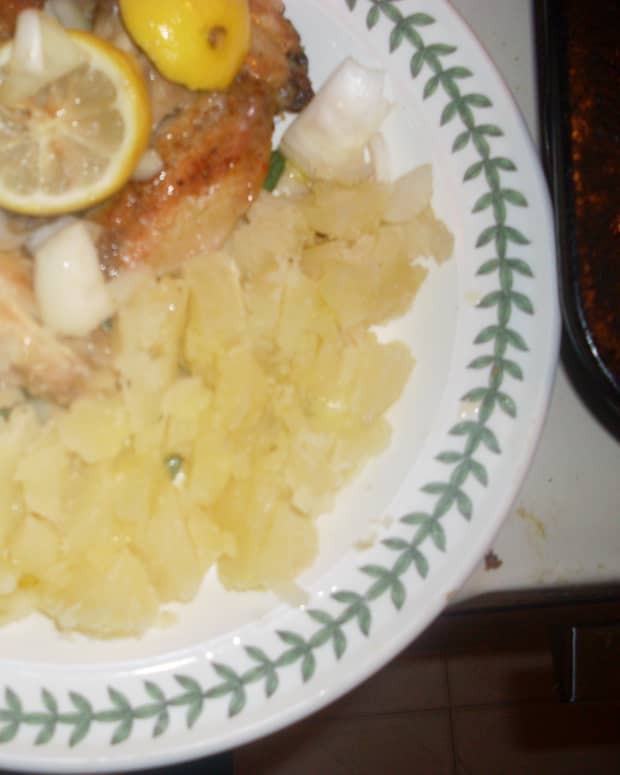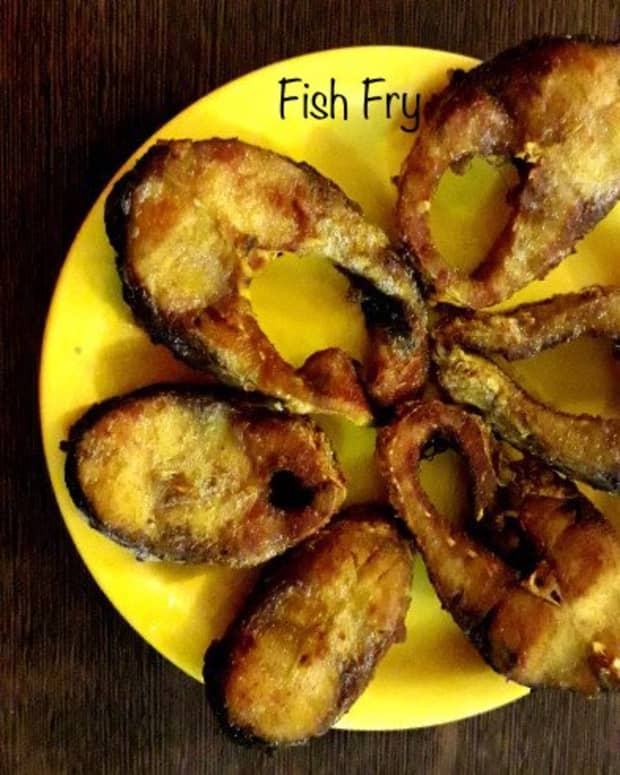Hue City 1968 : Turning Point of the Vietnam War
BA University of Arkansas (Fayetteville) Geography & History
The Battle for Hue: Tet 1968












The Rise and Fall of French Indo-China
In the mid to late 1800s, the French nation would wage a thirty-year campaign to claim all of Indochina as their colony. French leaders put little value on Laos or Cambodia, the two other kingdoms that made up the Indochina peninsula. It was Vietnam, with its fine seaports, large indigenous population, and rich land, that would become the center of French rule. Vietnam would officially become a French protectorate in 1883.They would govern their new colony from the city of Hue. It had been the center of Vietnamese culture since 300 A.D. "Viet" was the Chinese word for a tribe of barbarians who had moved to the south side of the Yangtze River before recorded time. Vietnam's territory was first annexed by Chinese invaders about a century before the birth of Christ. China ruled Vietnam as it southernmost province for more than a thousand years, Vietnam's culture, language, religion, and government all originated from Chinese influences. In 939 A.D., a Vietnamese army defeated the Chinese and Vietnam became a separate kingdom. During the Chinese occupation of Vietnam they introduced the plow and other farming techniques to the Red River Delta, where the city of Hanoi would one day rise.
Under French rule a caste system similar to the antebellum south in the southern United States during the 1800s, and the Junkers of East Prussia would emerge. Built around a plantation society, principally rice production, French elite would rule the country using the Vietnamese as free labor. During that period Vietnam would become one of the world's leading exporters of rice. French occupation sowed the seeds for a large nationalist movement that would shape Vietnamese politics into the twentieth century. The most influential Vietnamese nationalist leader to come forth would become Ho Chi Minh. He appealed to a broad range of Vietnamese. His supporters would affectionately call him "Uncle Ho."
在20世纪的一系列World Wars would weaken the French grip on Vietnam. During both the wars France would become a principle battle ground leaving the country's infrastructure in a state of ruins. In the First World war alone over 1,300,000 Frenchmen would die on the Western Front. In the Second World War, France would be overwhelmed by the German army leaving the country under Nazi occupation for over four years. In 1945 at the end of the Second World War, France would again attempt to take back control of Vietnam. But Ho Chi Minh and his Vietminh would take control of the countryside, soon after Japanese troops left the country, leaving French troops besieged in and around Hanoi. After the Second World War a Cold War would materialize with global politics polarized between Communism and Western Style Democracy. Vietnam would become a Cold War battleground as these two political philosophies battled for control of Vietnam and other emerging nations after the Second World War.
French Indo China





The Battle of Dien Bien Phue and the End of the First Indochinese War
Soon after the end of the Second World War, Ho Chi Minh issued regular communiques from his hut deep in the jungle of Vietnam urging for support against his French occupiers. Moa Zedong, now the leader of Communist China, would answer Ho's call for support and began funneling massive amounts of military aid to Ho's Viet Minh in Vietnam. Gradually with Moa's assistance the balance of power in Indochina began to tilt in favor of Ho's Communist forces. In 1949 a Communist victory in China fueled the fear of Communist expansion into southeast Asia. As military and international pressure mounted against the French, they grew more desperate to settle the matter militarily in Vietnam before Ho Chi Minh's Viet Minh grew much stronger.
While Vo Nguyen Giap fought the Japanese troops who occupied Vietnam during the Second World War, Ho named him commander and chief of his army. Though Giap, just thirty-two, was young enough to be Ho's son, he was almost certainly became his heir. During Ho's fruitless talks with the French he had become his unofficial head of state. During the early 1950s, Giap pursued his four-step theory of war against the French troops in Vietnam. His theory consisted of maneuver, large movement, positioning, and lastly victory. In 1953, Giap launched his second stage theory of war by marching his army through the impenetrable jungle across Laos, to the royal capital of Luong Prabang, soon afterward he installed a puppet government loyal to Ho Chi Minh, creating the Government of the Free Laotian, the Pathet Lao.
Giap's success in Laos provoked a French response which resulted into a full-scale battle in the valley of Dien Bien Phu near the Laotian border. Dien Bien Phu, three hundred miles west of Hanoi in the mountains along the Laotian border, seemed the right place to mass enough French soldiers to disrupt the Viet Minh's supply routes from China and Laos.
The Fall of Dien Bien Phu











的摊牌at Dien Bien Phu: A Ring of Death
过于雄心勃勃的法国Frenc的指挥官h Expeditionary Force in Vietnam , Henri Navarre, promised Paris a victory over Ho Chi Minh's Viet Minh by the end of 1955. The French strategy at Dien Bien Phu was flawed from the very beginning. They counted on supplying their troops by land even though many roads were not secure from guerrilla attack. The only other option was to provide reinforcements and supplies by air, which would require skirting a mountain rim that dominated the plain. Also, Giap planned to launch his attack on the base during monsoon season to further complicate re-supply of Dien Bien Phu. An American general would inspect the French defenses and agreed with Navarre the Dien Bien Phu was impregnable adding to French overconfidence.
For years Chinese strategist had been traveling to Vietnam to offer military advice to Ho and Giap. The Chinese also sent hundreds of 75-millimeter Russian and Chinese cannons, along with tons of ammunition and hand grenades, along with thousands of Skoda rifles. Ho would even request even more help from China to blunt the French offensive, Moa sent six hundred trucks, many driven by Chinese soldiers. To add to these reinforcements, Giap added tens of thousands of Vietnamese porters. For five months Giap's troops transported equipment on the backs of ponies or the Viet Minh themselves, to forge an impenetrable ring surrounding the French base at Dien Bien Phu. Seeing his chance to encircle and crush the French and achieve a decisive victory, General Giap moved as much artillery as he could muster into the surrounding hills. He also set up masses of anti-aircraft guns on the hills, knowing that if he could prevent French helicopters and supply planes from getting close, he could effectively cut off French supplies. Heavy guns, rocket launchers, machine gun nests and tens of thousands of Viet Minh soldiers would make it impossible for French troops to escape from Dien Bien Phu. Any attempt at resupplying the base from the air would become a suicide mission. To put it simply the French soldiers at Dien Bien Phu were already prisoners of the Viet Minh before the actual battle began.
When the Viet Minh began artillery bombardment of the French positions in the valley in late January 1954, the French were taken by surprise at the number of artillery pieces the Viet Minh had managed to amass. Vietminh artillery positions hidden inside caves and on the hills surrounding the base would spell doom for the troops inside Dien Bien Phu. Giap's Vietminh would tunnel underneath, and up to French strong points, reminiscent of First World War tactics on the Western Front in France from 1914-18. General Giap also used 200 U.S. trucks built by General Motors captured by the Chinese during the Korean War (1950-53) to help build up his defenses around the base. By the time of the battle Giap's troops surrounding Dien Bien Phu would total more than 50,000, compared to France's 16,000 troops. The French inside Dien Bien Phu were now surrounded by a ring of artillery and anti-aircraft guns that would bring about the total destruction of the base. In a desperate bid to avoid defeat, French leaders reached out for American assistance. A plan (Operation Vulture) was considered by American generals which included an attack on Viet Minh positions by a fleet of sixty B-29 bombers. The use of four small atomic bombs was even contemplated around the base to break up Viet Minh attacks. However, American President Dwight D. Eisenhower decided against intervention leaving the French base at Dien Bien Phu to its fate.
八周,二百越盟的重artillery positions hammered the French defenses from the hills surrounding the base. Slowly all of the French artillery positions were silenced, morale at the garrison plunged. On May 7,1954, Giap ordered an all-out attack and masses of French troops began to surrender rather than die. At 5:30 p.m., Giap's troops overran the headquarters building and captured its officers. Later that night after another attack the last 2,000 French soldiers at the base surrendered. Over 10,000 French soldiers were taken prisoner after the battle by the Vietminh, only one out of three would survive captivity. For the first time in the history of Western colonialism, Asian troops in a fixed battle defeated a European army. Soon after the French defeat at Dien Bien Phu the United State would deepen its involvement in Vietnam. After the United States was drawn into Vietnam, American marines would come under a similar siege at Khe Sanh in 1968 during the Tet offensive. Fearing another Dein Bien Phu, the United States would carpet bomb North Vietnamese positions surrounding the base with B-52 bombers breaking the siege on the base.
The Division of Vietnam: The Geneva Conference May-July 1954
















America's War in Vietnam 1960-1975
秋天的色彩我的古城n 1968 during the Tet Offensive in would completely turn the American people's impression about the Vietnam War upside down. Throughout the 1960s most Americans were given the feeling by its political and military leaders that the U.S. was winning the war in Vietnam. Unknown to American leadership and its citizens Moa-Zedong pledged Chinese troops to Ho Chi Minh if American forces invaded North Vietnam. The fall of Hue created doubt if America troops could win the war in southeast Asia. The American public would ask the question, " If the North Vietnamese were so defeated why could they take the offensive in such a dramatic fashion?" After the Tet Offensive the American led South Vietnamese army would be rendered useless for over a year suffering devastating losses turning back the their communist attackers . The costly battle to retake Hue from the NVA would forever change American's faith in their government, setting the stage for the end of American involvement in Vietnam. Though the North Vietnamese army and Viet Cong were defeated on that battle field they won a spectacular political victory over the American government and its leadership. After the Tet Offensive American President Lyndon Johnson's approval rating would slump to an all time low with the American people. On March 31,1968, on national television Johnson would announce he would not run for re-election giving the anti-war movement a dramatic victory. Before the war ended it would cost in human terms 1.3 million dead, of which 58,000 were American.
The American air war in Vietnam was one of the largest in military history. Between 1965 and 1975, over a ten year period, the United States and its Allies dropped more than eight million tons of bombs in North and South Vietnam. Many of these bombs also ended up in the neighboring countries of Laos and Cambodia. By 1968 the American military buildup in Vietnam authorized by President Johnson would reach a staggering total of over 500,000 troops. The Vietnam War would become the first television war. The American people would watch bloody images of the days battles on their color television sets every evening after dinner.
In early 1962 American forces would begin using helicopters for offensive (search and destroy) operations in Vietnam. The war would also become the first helicopter war in military history. American generals would build fire bases throughout South Vietnam to support their offensive operations against North Vietnamese (NVA) and Viet Cong (VC). They would base their success on body counts of dead NVA and VC which would give a false impression of enemy's strength. The search and destroy strategy was a type of attritional warfare developed by General William Westmoreland the overall commander of American forces in Vietnam. The goal of this strategy was to reach a "tipping point" where North Vietnam was simply unable to continue the war. But the North Vietnamese could easily replace their losses with troops and supplies from the Ho Chi Minh trail in Laos. The American air force would relentlessly bomb the trail without success throughout the war. Using Soviet and Chinese bulldozers and earth movers, labor battalions widened the existing roads south to resemble a highway from Quang Tri, just over the DMZ, all the way down to the Mekong Delta. The result gave the North Vietnamese army 12,000 miles of roadway and a 3,000 mile pipeline to carry oil from Quang Tri to their headquarters at Loc Ninh, seventy-five miles northwest of Saigon. From that base field commanders of the Vietcong and North Vietnamese units could communicate instantly with their leaders in their Communist capital of Hanoi.
Firebases in Vietnam



The Climatic Battle for Hue
In February 1966, at a strategy meeting in Honolulu, American President Lyndon Johnson asked his commander in South Vietnam, General William Westmoreland, what his next step might be if he were the enemy commander. "Capture Hue," General Westmoreland answered without hesitation, explaining that the city was the symbol of a unified Vietnam. "Taking it would have a profound psychological impact on the Vietnamese in both the North and the South, and in the process the North Vietnamese might seize the two northern provinces as bargaining chips in any negotiations." Almost two years later, to the day, the North Vietnamese overwhelmed the defenders of Hue and held most of it for nearly a month. The only combat troops to resist their initial assault were a thinned out South Vietnamese company. The nearest U.S. troops were seven miles away. Occupying Hue would be the boldest and most dramatic action taken by the North Vietnamese up to that point in the Vietnam War.
The Tet offensive was a series of simultaneous attacks on nearly every city, town, and major military base throughout South Vietnam. It would begin early Wednesday morning January 31,1968, the first day of the Lunar New Year and of Tet. The American public was shocked by the size and scope of the Tet offensive since American leaders had been reporting that the war in Vietnam was almost won. The battle for Hue would lead to the largest and bloodiest battle of the Tet offensive. American and South Vietnamese troops would be forced to fight for every street and house against a fortified enemy force of over 12,000 determined NVA troops. While most of the battles of the Tet offensive had mostly been quickly settled, the battle for Hue would rage on until February 25,1968, until the North Vietnamese troops were finally overwhelmed by American firepower.
At first, U.S. forces near Hue responded ineffectually with bad intelligence, sending only a handful of U.S. Marine platoons into the city. Most of these forces would take heavy casualties, and were not surprisingly battered back by the well dug NVA. Most of the heaviest fight for the city would take place around the Citadel, a walled fortress built inside Hue in 1802. Hue had originally been just been the Citadel, a city within a city, an enormous fortress bordered by a large moat that enclosed nearly two square miles of flat land. At the south center of the fortress was the royal palace and its grounds, which were enclosed by an inner fortress. It was modeled after China's Forbidden City, with a throne room constructed of intricately painted wood beams and panels and colorful gilded dragons. It was the former imperial seat and the major center of learning and worship for Vietnam. Ho Chi Minh had lived their as a young child and was educated within its walls.
Resistance around Hue had been organizing for months, helped by a complete breakdown in U.S intelligence. The small CIA unit in Hue seldom traded information with the American advisory team in the city, and neither side stayed in regular contact with the South Vietnamese intelligence. By the time of radio reports about suspicious movement around the U.S. base at Phu Bai, eight miles to the southwest of Hue, the communist had already taken most of Hue.
Supplementing the Viet Cong and North Vietnamese army units invading the city were elite commando units, an artillery battalion armed with 122-mm rockets, and various specialized companies armed with mortars, heavy machine guns, and bazookas. Backing the fighters were thousands of civilian volunteers, an elaborate support and supply network staffed mostly by local men and women. These local supporters would lead the Communist forces into the city, and when the fighting began they delivered food and ammunition, and helped evacuate the wounded to field hospitals, and also assisted in digging bunkers and trenches, and burying the dead. Over 6,000 civilians would lose their lives in the battle for Hue. Early in the battle Communist soldiers believed they were spearheading the victorious final battle of the war. But soon their hopes were dashed as American forces put a stranglehold on their positions and began destroying them one by one. Near the end of their occupation most NVA fought during the day and spent most of the night digging graves for their fallen comrades. In the end what was left of the Communist force escaped toward Laos before they were completely cut off and destroyed.
The North Vietnamese forces occupying the city would use the Citadel as their last line of defense as they were slowly squeezed out of the city. Although crumbling in places, the Citadel was still an enormously impressive site, bordered all around by a moat that was crossed by eleven narrow bridges. The Citadel's outer wall built in 1802, was 30 feet high and 20 feet thick. The walls were actually two parallel ramparts about twenty to thirty feet apart, the space between them were filled with earth. The gap between the walls was wide enough for homes and gardens and walking paths and guard posts behind the parapets.
Before the battle Hue was the one place in all of Vietnam that had been hardly touched by the war. After the battle over 80% of the city was reduced to rubble. American forces were compelled to destroy the city in order to save it from the Communist. After five days of heavy fighting American forces disregarded the initial order not to use heavy artillery or air power to support the marines retaking the city. During the fighting for Hue 52,000 rounds of artillery were fired into the city, along with 7,670 rounds of heavy naval artillery and 600 tons of air-dropped munitions. With napalm, the flames sucked all the oxygen out of the underground bunkers, suffocating anyone inside, while incinerating every living thing that wasn't made of stone friend or foe. For the NVA defending Hue there was no way to avoid the American onslaught to re-take the city.
As fighting deepened in Hue itself, American marines experience an appalling introduction to urban warfare, something they hadn't seen since the Second World War. Early in the battle to re-occupy the city it was soon discovered it was instant death walking the streets even somewhat concealed. The only safe avenue of attack was going through walls of buildings since the NVA had ambushes set at every street corner. Recoilless rifles and Korean War era bazookas were used punch holes in walls to advance toward key objectives. Once inside the Citadel the fighting was hand to hand. During the battle marines found two dead NVA chained to their heavy machine guns. That instance reinforced the rumor that the enemy was made up of soldiers who would fight to the last, not because they believed in their cause, but because they were compelled to do so. The dead enemy soldiers may have been prisoners released weeks earlier, and forced to fight, instead of being murdered on the spot. The story would spread rapidly among American soldiers, soon no mercy was given by the marines to the Communist defending Hue. The rule also applied to any dogs found wandering the streets of Hue once they were seen eating the dead. Of the over 6,000 citizens who died during the battle 2,800 were executed by the NVA as a form of political cleansing. Some of those executed were suspected of helping the enemy, others were intellectuals such as teachers, doctors, businessmen, and lawyers, who they considered sowed the seeds of distrust for Communism. Many of those were who were executed were found in a mass grave after the battle.
The battle for Hue brought the Tet Offensive effectively to an end. For the North Vietnamese, the Tet Offensive was a complete military failure. Ho Chi Minh's hope that the people of South Vietnam would rise up against the American and South Vietnamese armed forces didn't happen during Tet. The North would lose over 54,000 troops killed our wounded, and the Viet Cong was almost entirely wiped out. The Viet Cong after Tet was no longer an effective political or military organization. The Tet Offensive was beyond question a military victory for the United States, but it sent alarm bells ringing for its politicians who portrayed the North Vietnamese near the edge of defeat.
The Battle for the Citadel: Hue 1968










Walter Cronkite calls for the U.S. to get out of Vietnam
Sources
Cronkite, Walter.A Reporters Life. Random House, Inc., 375 Hudson Street New York NY 10014. 1996
Isserman, Maurice.Vietnam War: Updated EditionFile on Facts, Inc. 132 West 31st Street, New York NY 10001 United States. 2003
Jorgensen, Christer.Great Battles: Decisive Conflicts That Have Shaped History.Paragon, Queen Street House 4 Queen Street, Bath BAI 1HE UK. 2010
Langguth, A. J.Our Vietnam: The War 1954-1975. Simon & Schuster, Rockefeller Center 1230 Avenue of the Americas, New York NY 10020 United States. 2000
© 2021 Mark Caruthers

